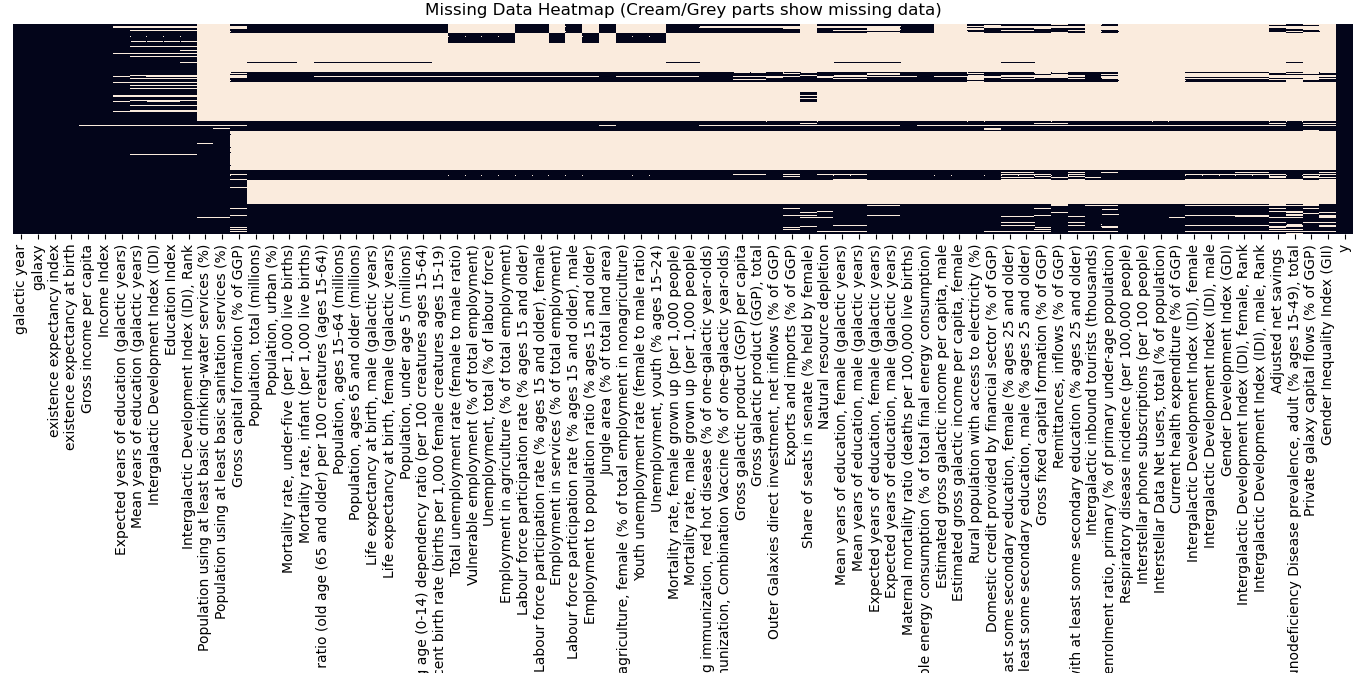
Why datastand? Data + Understand
A python package to help Data Scientists, Machine Learning Engineers and Analysts better understand data. Gives quick insights about a given dataset:
- general dataset statistics
- size and shape of dataset
- number of unique data types
- number of numerical and non- numerical columns
- small overview of dataset
- missing data statistics
- missing data heatmap and
- provides methodology to impute missing data
Installation
Run the following command on the terminal to install the package:
Usage
Importing and using datastand
1
2
3
4
5
6
| from datastand.datastand import datastand
import pandas as pd
df = pd.read_csv("path/to/target/dataframe")
datastand(df)
|
Calling datastand on the given dataset gives the following output:
1
2
3
4
5
6
7
8
9
10
11
12
13
14
15
16
17
18
19
20
21
22
23
24
25
26
27
28
29
30
31
32
33
34
35
36
37
38
39
40
41
42
43
44
45
46
47
48
49
50
51
52
53
|
General stats:
______________
Size of DataFrame: 309200
Shape of DataFrame: (3865, 80)
Number of unique data types : {dtype('int64'), dtype('O'), dtype('float64')}
Number of numerical columns: 79
Number of non-numerical columns: 1
Head of DataFrame:
__________________
galactic year galaxy existence expectancy index ... Private galaxy capital flows (% of GGP) Gender Inequality Index (GII) y
0 990025 Large Magellanic Cloud (LMC) 0.628657 ... NaN NaN 0.052590
1 990025 Camelopardalis B 0.818082 ... 22.785018 NaN 0.059868
2 990025 Virgo I 0.659443 ... NaN NaN 0.050449
3 990025 UGC 8651 (DDO 181) 0.555862 ... NaN NaN 0.049394
4 990025 Tucana Dwarf 0.991196 ... NaN NaN 0.154247
[5 rows x 80 columns]
Tail of DataFrame:
__________________
galactic year galaxy existence expectancy index ... Private galaxy capital flows (% of GGP) Gender Inequality Index (GII) y
3860 1015056 Columba I 1.029704 ... 29.294865 0.580785 0.042324
3861 1015056 Leo II Dwarf (Leo B, DDO 93) 0.937869 ... 31.085400 0.517558 0.036725
3862 1015056 Canes Venatici I Dwarf 1.036144 ... 32.145570 0.363862 0.166271
3863 1015056 KKs 3 0.939034 ... 27.227179 0.711878 0.024187
3864 1015056 NGC 5237 1.032244 ... 29.957851 0.583706 0.100069
[5 rows x 80 columns]
Missing data:
=======================
DataFrame contains 185698 missing values(60.06%) as follows column-wise:
-----------------------------------------------------------------------
galactic year 0
galaxy 0
existence expectancy index 1
existence expectancy at birth 1
Gross income per capita 28
...
Adjusted net savings 2953
Creature Immunodeficiency Disease prevalence, adult (% ages 15-49), total 2924
Private galaxy capital flows (% of GGP) 2991
Gender Inequality Index (GII) 3021
y 0
Length: 80, dtype: int64
-----------------------------------------------------------------------
Do you wish to long-list missing data statistics?(y/n): y
.
.
.
|
Missing data heatmap
To plot a heatmap to visualize missing data statistics, we import a function plot_missing:
1
2
3
4
5
| # This function is already available in the DataStand class and also available separately
# Here we're running it separately
from datastand.datastand import plot_missing
plot_missing(df)
|

Data imputation
Datastand offers data imputation methodologies using the following strategies:
- For numerical columns: fill missing value with a random value chosen from:
- np.arange(min value in the column, max_value, standard deviation of the column)
- For categorical columns:
- fill with a constant value (method 1)
- fill with a value chosen from the already existing categories at random
This way we ensure we maintain the trend of data in that particular column.
NOTE: We impute only columns with less than half missing data points of the total length of the column
1
2
3
| from datastand.datastand import impute_missing
impute_missing(df)
|
Output:
1
2
3
| Imputing missing data...
100%|████████████████████████████████████████████████████████████████████████████████████████████████████████████████████████████████████| 80/80 [00:02<00:00, 30.52it/s]
Imputation complete.
|

